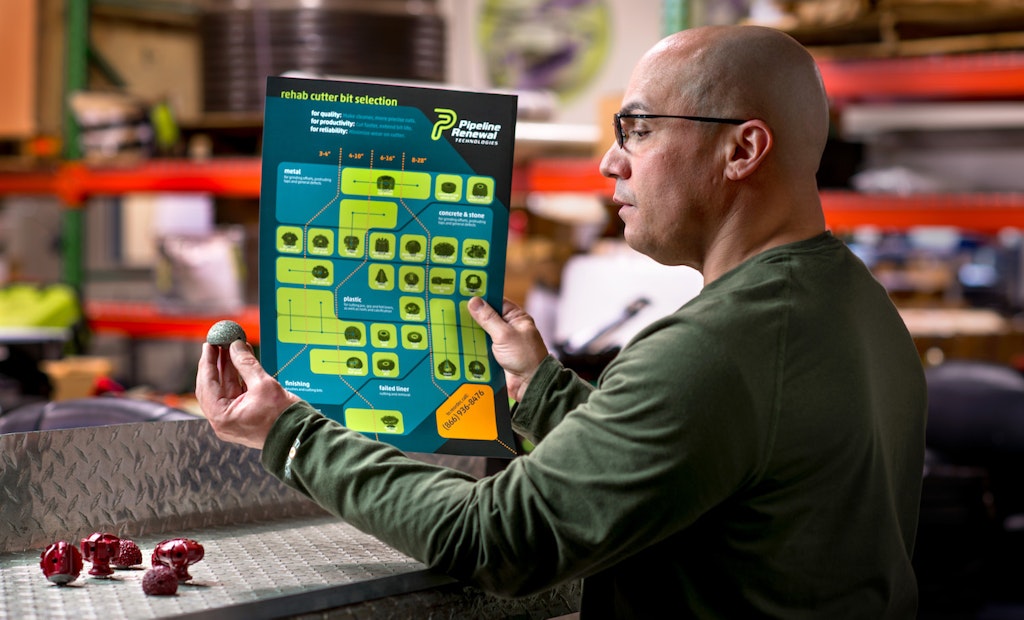Interested in Relining/Rehab?
Get Relining/Rehab articles, news and videos right in your inbox! Sign up now.
Relining/Rehab + Get AlertsSewer rehabilitation cutter operations require a great deal of attention to detail. Whether you’re using a cutter to reinstate lateral connections or to repair defective liner, whether you’re preparing for CIPP work or ready to grind away protruding taps — the job on hand is an important one and requires precision and experience. However, even the most advanced lateral and mainline rehabilitation and reinstatement cutters can’t work effectively without the right cutter bit. Cutter bits can make or break a job, and choosing the wrong one can damage your cutter, slow down your team and add unnecessary time and cost to projects. Getting acquainted with the various cutter bits’ purposes can increase the quality of rehabilitation projects, productivity of operators and lifetime of your rehabilitation cutter.
Cutter bits come in a variety of sizes, shapes and material, all with a special job. Cutter bits designed for one pipe material or size may not be suitable for use in another. Pipe diameter limits how a cutter can maneuver and articulate itself to perform rehab, and your cutter and bit size will usually dictate the size of the pipe you can work in. If you choose a bit that’s too small, you may waste time and money if the project takes longer than intended. If you use a bit that’s too big, you risk damaging pipes.
In addition to size, cutter bits come in different shapes designed to perform very specific jobs. Some can cut pipes and liners, while others are intended for finishing. Material, bit shape and size of the pipe are all very important to take into account when choosing a bit. Just some examples of the specialized bits available include:
- Corundum cup wheel – Used to grind offsets, protruding taps and general defects in 4- to 28-inch metal pipe
- Diamond milling tools – Used to grind offsets, protruding taps and general defects in 6- to 16-inch concrete and stone pipe
- Diamond cone – Used for cutting PVC, GRP and felt liners, as well as for roots and calcification in 4- to 16-inch plastic pipes
- Carbide half globe – Used to finish 3- to 10-inch pipes and to cut PVC, GRP and felt liners in 3- to 4-inch plastic pipes
- Epulo cone and ball – Used in 8- to 28-inch lines to cut PVC, GRP and felt liners and for root and calcification in plastic pipes, as well as to cut and remove failed liner
- Brushes – Used to finish projects in 4- to 16-inch pipes
The above isn’t an exhaustive list, but just a small selection of the choices a sewer rehabilitation professional is presented with. In order to make it easier for you to choose the right cutter bit for the job, Pipeline Renewal Technologies has created a free Rehab Cutter Bit Selection Guide. Simplify your sewer pipe rehabilitation with our easy-to-understand poster, perfect for your van or truck. Provide your address and PRT will mail one to you for free (anywhere in the U.S. or Canada).
Visit the Pipeline Renewal Technologies Storefront






